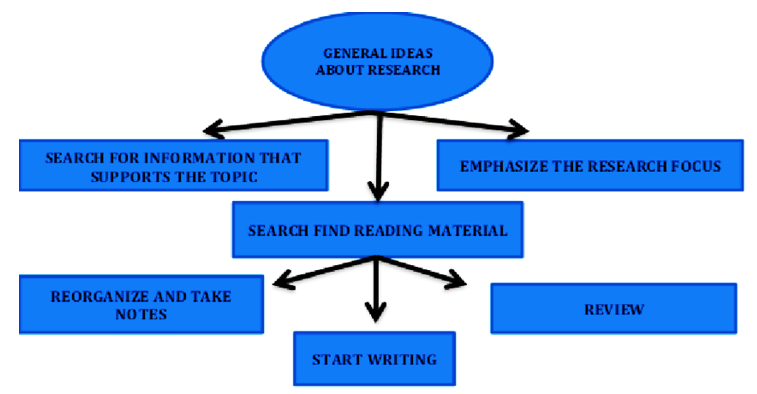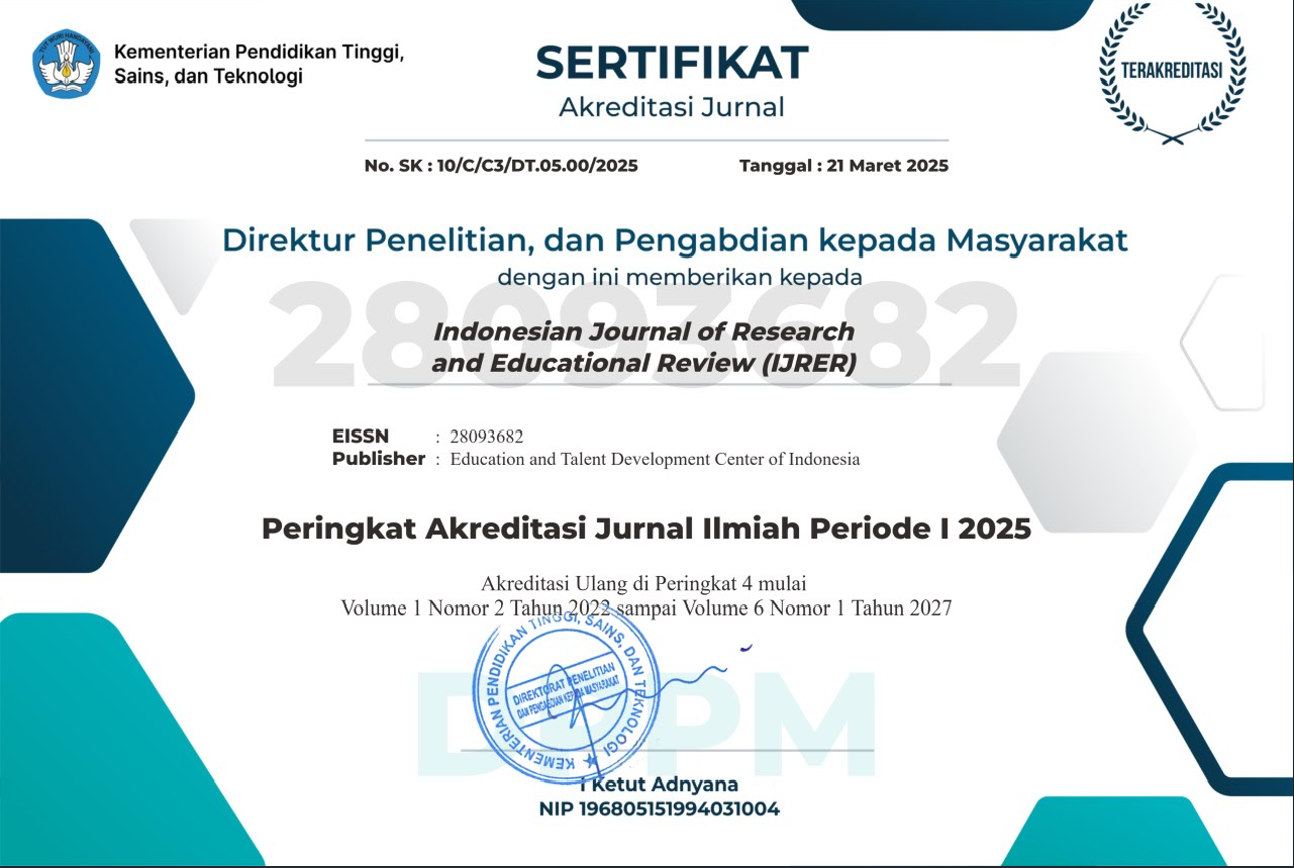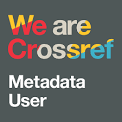Methods in Learning: An Introduction and Conceptual Review
DOI:
https://doi.org/10.51574/ijrer.v4i4.3484Keywords:
Discovery Method, Innovative Learning, Learning Method, Literature Review, Problem-SolvingAbstract
Effective learning in elementary education is key to creating a generation capable of competing in the global era. Various methods, including student-centered learning, the use of technology in learning, project-based learning, and differentiated learning approaches, have been shown to increase student engagement, critical thinking skills, and problem-solving. Therefore, this study aims to analyze various effective learning methods through a conceptual literature review. Using a literature review or library research approach, this study collects and analyzes various relevant sources to understand the concepts and applications of learning methods. This research finding demonstrates that effective learning methods are crucial for improving the quality of learning and achieving educational goals. This research identifies various learning methods in education: lecture method, discussion method, demonstration method, experimental method, field trip method, practice method, simulation method, debate method, mind mapping method, discovery method, and problem-solving method. This research demonstrates that each learning method has advantages and disadvantages, and therefore, it is important to select and use them appropriately according to the context and learning objectives. Many aspects related to learning methods still require further research, such as the development of more effective and contextual learning methods. However, challenges such as unequal access to technology and teacher readiness need to be addressed to ensure that every student has optimal learning opportunities. The results of this study are expected to contribute to the development of more effective and innovative learning practices.
References
Abbas, A., Ekowati, D., Suhariadi, F., & Anwar, A. (2024). Human capital creation: a collective psychological, social, organizational and religious perspective. Journal of Religion and Health, 63(3), 2168-2200. https://doi.org/10.1007/s10943-022-01665-8
Abidin, Z., & Muhammad, N. (2024). Effective classroom management as a quick solution to improve student participation and motivation in the learning process. Zabags International Journal of Education, 2(2), 83-97. https://doi.org/10.61233/zijed.v2i2.22
Ajmal, F., & Hafeez, M. (2020). Assessment of Student's Academic Achievement by Flipped Classroom Model and Traditional Lecture Method. Global Educational Studies Review, 5(4), 10-19.
Akram, H., Abdelrady, A. H., Al-Adwan, A. S., & Ramzan, M. (2022). Teachers’ perceptions of technology integration in teaching-learning practices: A systematic review. Frontiers in psychology, 13, 920317.
Alamrani, M. H., Alammar, K. A., Alqahtani, S. S., & Salem, O. A. (2018). Comparing the effects of simulation-based and traditional teaching methods on the critical thinking abilities and self-confidence of nursing students. Journal of Nursing Research, 26(3), 152-157. https://doi.org/10.1097/jnr.0000000000000231
Baek, C., Faul, M. V., Hopkins, A. N., Iwabuchi, K., & Steiner-Khamsi, G. (2024). Strategic review: improving the use of evidence for education policy, planning and implementation.
Batdi, V. (2015). A meta-analysis study of mind mapping techniques and traditional learning methods. The Anthropologist, 20(1-2), 62-68. https://doi.org/10.1080/09720073.2015.11891724
Birhan, W., Shiferaw, G., Amsalu, A., Tamiru, M., & Tiruye, H. (2021). Exploring the context of teaching character education to children in preprimary and primary schools. Social Sciences & Humanities Open, 4(1), 100171.
Blyznyuk, T., & Kachak, T. (2024). Benefits of interactive learning for students' critical thinking skills improvement. Journal of Vasyl Stefanyk Precarpathian National University, 11(1), 94-102. https://journals.pnu.edu.ua/index.php/jpnu/article/view/7840
Bundick, M. J., Quaglia, R. J., Corso, M. J., & Haywood, D. E. (2014). Promoting student engagement in the classroom. Teachers College Record, 116(4), 1-34.
Chan, P. P., Lee, V. W., Yam, J. C., Brelén, M. E., Chu, W. K., Wan, K. H., ... & Pang, C. P. (2023). Flipped classroom case learning vs traditional lecture-based learning in medical school ophthalmology education: a randomized trial. Academic Medicine, 98(9), 1053-1061. https://doi.org/10.1097/ACM.0000000000005238
Chandanani, M., Laidlaw, A., & Brown, C. (2025). Extended reality and computer-based simulation for teaching situational awareness in undergraduate health professions education: a scoping review. Advances in Simulation, 10(1), 18.
Damanik, J., & Widodo, W. (2024). Unlocking teacher professional performance: exploring teaching creativity in transmitting digital literacy, grit, and instructional quality. Education Sciences, 14(4), 384. https://doi.org/10.3390/educsci14040384
Faratunnisa, A. N., & Afifah, N. (2024). Kajian Makna Sistem dalam Fondasi Pendidikan Nasional Indonesia. JURNAL SARAWETA, 2(2), 108-119.
Fegran, L., ten Ham‐Baloyi, W., Fossum, M., Hovland, O. J., Naidoo, J. R., van Rooyen, D., ... & Robstad, N. (2023). Simulation debriefing as part of simulation for clinical teaching and learning in nursing education: a scoping review. Nursing open, 10(3), 1217-1233. https://doi.org/10.1002/nop2.1426
Fitrah, M., Umar, U., Jayanti, M. I., & Syafruddin, S. (2024). Penguatan pendidikan karakter di Indonesia: Landasan filosofis dan yuridis dalam membentuk generasi yang berkarakter. eL-Muhbib jurnal pemikiran dan penelitian pendidikan dasar, 8(2), 378-393.
Franklin, H., & Harrington, I. (2019). A review into effective classroom management and strategies for student engagement: Teacher and student roles in today’s classrooms. In Journal of Education and Training Studies (Vol. 7, p. 1). Redfame Publishing Inc.
Gillies, R. M. (2011). Promoting thinking, problem‐solving and reasoning during small group discussions. Teachers and Teaching: theory and practice, 17(1), 73-89. https://doi.org/10.1080/13540602.2011.538498
González-Pérez, L. I., & Ramírez-Montoya, M. S. (2022). Components of Education 4.0 in 21st century skills frameworks: systematic review. Sustainability, 14(3), 1493.
Hajian, S. (2019). Transfer of learning and teaching: A review of transfer theories and effective instructional practices. IAFOR Journal of education, 7(1), 93-111.
Handayani, S., Akbar, A. M., & Septia, N. (2025). Konsep Pendidikan sebagai Suatu Sistem dan Komponen Sistem Pendidikan. Jurnal Bintang Pendidikan Indonesia, 3(1), 322-329. https://doi.org/10.55606/jubpi.v3i1.3606
Hidayati, N. A., Fahmi, S., & Farida, K. (2019). The comparative of mathematics learning using guided discovery method and expository method to mathematics learning outcomes. In Journal of Physics: Conference Series (Vol. 1321, No. 3, p. 032103). IOP Publishing.
Hussein, A., Gaber, M. M., Elyan, E., & Jayne, C. (2017). Imitation learning: A survey of learning methods. ACM Computing Surveys (CSUR), 50(2), 1-35. https://doi.org/10.1145/3054912
Jagger, S. (2013). Affective learning and the classroom debate. Innovations in Education and Teaching International, 50(1), 38-50.
Larsen, C., Walsh, C., Almond, N., & Myers, C. (2017). The “real value” of field trips in the early weeks of higher education: the student perspective. Educational Studies, 43(1), 110-121. https://doi.org/10.1080/03055698.2016.1245604
Larsen, C. M., Terkelsen, A. S., Carlsen, A. M. F., & Kristensen, H. K. (2019). Methods for teaching evidence-based practice: A scoping review. BMC medical education, 19(1), 259. https://doi.org/10.1186/s12909-019-1681-0
Latif, A., & Safitri, I. (2020). Pengaruh Metode Pembelajaran Problem Solving Terhadap Aktivitas Belajar Siswa. Jurnal Eduscience, 7(2), 1-9.
Lavie Alon, N., & Tal, T. (2017). Field trips to natural environments: how outdoor educators use the physical environment. International Journal of Science Education, Part B, 7(3), 237-252.
Liu, K., Liu, S., Ma, Y., Jiang, J., Liu, Z., & Wan, Y. (2024). Comparison of blended learning and traditional lecture method on learning outcomes in the evidence-based medicine course: a comparative study. BMC Medical Education, 24(1), 680. https://doi.org/10.1186/s12909-024-05659-w
Lopez-Agudo, L. A., & Marcenaro-Gutierrez, O. D. (2017). Engaging children in lessons: The role of efficient and effective teachers. School effectiveness and school improvement, 28(4), 650-669.
Louws, M. L., Van Veen, K., Meirink, J. A., & Van Driel, J. H. (2017). Teachers’ professional learning goals in relation to teaching experience. European journal of teacher education, 40(4), 487-504. https://doi.org/10.1080/02619768.2017.1342241
Kalangi, V. P., & Zakwandi, R. (2023). Penerapan Metode Pembelajaran Eksperimen untuk Meningkatkan Hasil Belajar Siswa. PTK: Jurnal Tindakan Kelas, 3(2), 266-276.
Kang, J., & Keinonen, T. (2018). The effect of student-centered approaches on students’ interest and achievement in science: Relevant topic-based, open and guided inquiry-based, and discussion-based approaches. Research in science education, 48(4), 865-885.
Kioupi, V., & Voulvoulis, N. (2019). Education for sustainable development: A systemic framework for connecting the SDGs to educational outcomes. Sustainability, 11(21), 6104. https://doi.org/10.3390/su11216104
Kusuma, A. H., Ramadhani, D. A., Lestari, D., & Marini, A. (2024). Tantangan dan Peluang terhadap Manajemen Sumber Daya Manusia dalam Pendidikan Guru Sekolah Dasar. Jurnal Pendidikan Dasar dan Sosial Humaniora, 3(9), 615-626.
Madani, R. A. (2019). Analysis of educational quality, a goal of education for all policy. Higher Education Studies, 9(1), 100-109.
Mulang, H. (2021). The effect of competences, work motivation, learning environment on human resource performance. Golden Ratio of Human Resource Management, 1(2), 84-93.
Mumtaz, S., & Latif, R. (2017). Learning through debate during problem-based learning: an active learning strategy. Advances in physiology education, 41(3), 390-394. https://doi.org/10.1152/advan.00157.2016
Mustafa, P. S. (2022). Characteristics of learners and their implications in learning. AL-ISHLAH: Jurnal Pendidikan, 14(4), 7043-7056.
Oluwayimika, K. R., & Adeoye, K. A. (2023). The impact of field trip method of teaching basic science and technology on Junior Secondary School Students: Benefits and challenges. Journal Of Learning And Educational Policy, 35.
Ozdem-Yilmaz, Y., & Bilican, K. (2025). Discovery learning—jerome bruner. In Science education in theory and practice: An introductory guide to learning theory (pp. 173-187). Cham: Springer Nature Switzerland.
Ponomariovienė, J., & Jakavonytė-Staškuvienė, D. (2024). Solutions for independent goal setting and implementation of primary school students fostering the competence of learning to learn. Education sciences, 14(4), 368. https://doi.org/10.3390/educsci14040368
Pudlo, P., & Gavurová, B. (2013). Experimental teaching methods in higher education-practical application. International Multidisciplinary Scientific GeoConference: SGEM, 2, 423.
Rafiq, S., Afzal, A., & Kamran, F. (2022). Impact of school environment on students’ academic achievements at the university level. VFAST Transactions on Education and Social Sciences, 10(4), 19-30.
Rahman, S. (2020). Improving the power of lecture method in higher education. In Teaching learning and new technologies in higher education (pp. 135-147). Singapore: Springer Singapore.
Riswari, L. A., Yanto, H., & Sunarso, A. (2018). The effect of problem based learning by using demonstration method on the ability of problem solving. Journal of Primary Education, 7(3), 356-362.
Rodger, D., & Stewart-Lord, A. (2020). Students’ perceptions of debating as a learning strategy: A qualitative study. Nurse Education in Practice, 42, 102681. https://doi.org/10.1016/j.nepr.2019.102681
Rovers, S. F., Stalmeijer, R. E., van Merriënboer, J. J., Savelberg, H. H., & De Bruin, A. B. (2018). How and why do students use learning strategies? A mixed methods study on learning strategies and desirable difficulties with effective strategy users. Frontiers in psychology, 9, 2501.
Rusticus, S. A., Pashootan, T., & Mah, A. (2023). What are the key elements of a positive learning environment? Perspectives from students and faculty. Learning environments research, 26(1), 161-175. https://doi.org/10.1007/s10984-022-09410-4
Seechaliao, T. (2017). Instructional strategies to support creativity and innovation in education. Journal of education and learning, 6(4), 201-208.
Serdyukov, P. (2017). Innovation in education: what works, what doesn’t, and what to do about it?. Journal of research in innovative teaching & learning, 10(1), 4-33.
Shi, Y., Yang, H., Dou, Y., & Zeng, Y. (2023). Effects of mind mapping-based instruction on student cognitive learning outcomes: a meta-analysis. Asia Pacific Education Review, 24(3), 303-317. https://doi.org/10.1007/s12564-022-09746-9
Siagian, S., Sinambela, P. N. J. M., & Wau, Y. (2020). Effectiveness and efficiency of e-learning in Instructional Design. World Transactions on Engineering and Technology Education, 18(1), 73-77.
Sinambela, E. A., Darmawan, D., & Mendrika, V. (2022). Effectiveness of efforts to establish quality human resources in the organization. Journal of Marketing and Business Research (MARK), 2(1), 47-58.
Sivarajah, R. T., Curci, N. E., Johnson, E. M., Lam, D. L., Lee, J. T., & Richardson, M. L. (2019). A review of innovative teaching methods. Academic radiology, 26(1), 101-113.
Spiteri, M., & Chang Rundgren, S. N. (2020). Literature review on the factors affecting primary teachers’ use of digital technology. Technology, Knowledge and Learning, 25(1), 115-128. https://doi.org/10.1007/s10758-018-9376-x
Tawfik, A. A., Rong, H., & Choi, I. (2015). Failing to learn: towards a unified design approach for failure-based learning. Educational technology research and development, 63(6), 975-994.
Toor, R., Samai, K., & Wargo, R. (2017). Debate as an alternative method for medical literature evaluation. Currents in Pharmacy Teaching and Learning, 9(3), 427-432.
Uerz, D., Volman, M., & Kral, M. (2018). Teacher educators' competences in fostering student teachers’ proficiency in teaching and learning with technology: An overview of relevant research literature. Teaching and Teacher Education, 70, 12-23. https://doi.org/10.1016/j.tate.2017.11.005
Van, V. H. (2023). Developing high-quality human resources in the field of education and training: policies, legal provisions and recommendations for some solutions. Russian Law Journal, 11(2S), 377-388.
Villar‐Aldonza, A. (2023). To what extent a modern teaching style benefits students? Why do teachers act the way they do?. Journal of Computer Assisted Learning, 39(2), 578-590.
Voogt, J., & McKenney, S. (2017). TPACK in teacher education: Are we preparing teachers to use technology for early literacy?. Technology, pedagogy and education, 26(1), 69-83. https://doi.org/10.1080/1475939X.2016.1174730
Wiana, W., & Nuraeni, I. (2024). Penerapan metode problem solving dalam meningkatkan kemampuan literasi membaca teks persuasi pada peserta didik kelas VIII A SMP Negeri 15 Palu. Diglosia: Jurnal Kajian Bahasa, Sastra, dan Pengajarannya, 7(3), 409-420.
Wijngaards-de Meij, L., & Merx, S. (2018). Improving curriculum alignment and achieving learning goals by making the curriculum visible. International Journal for Academic Development, 23(3), 219-231.
Winarsih, E. D., & Wahyuningsih, R. (2024). Penerapan Metode Pembelajaran Eksperimen untuk meningkatkan Rasa Ingin tahu dan Tanggung Jawab Anak. Jurnal Inovasi, Evaluasi dan Pengembangan Pembelajaran (JIEPP), 4(1), 1-8.
Yusof, Y., Roddin, R., & Awang, H. (2015). What students need, and what teacher did: The impact of teacher's teaching approaches to the development of students’ generic competences. Procedia-Social and Behavioral Sciences, 204, 36-44. https://doi.org/10.1016/j.sbspro.2015.08.107
Zulkifli, Z., Kristiawan, M., & Sasongko, R. N. (2022). Improving students’ active learning through demonstration method. AL-ISHLAH: Jurnal Pendidikan, 14(4), 6539-6550. https://doi.org/10.35445/alishlah.v14i4.2313

Downloads
Published
How to Cite
Issue
Section
License
Copyright (c) 2025 Hamzah Alias, Hasan Basri, Saprin Saprin, Yuspiani Yuspiani

This work is licensed under a Creative Commons Attribution-ShareAlike 4.0 International License.









1.png)













